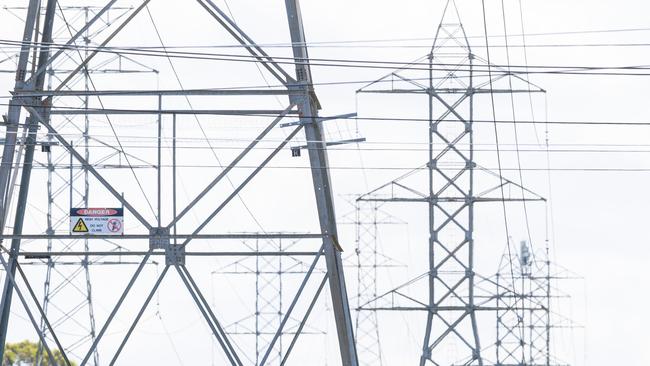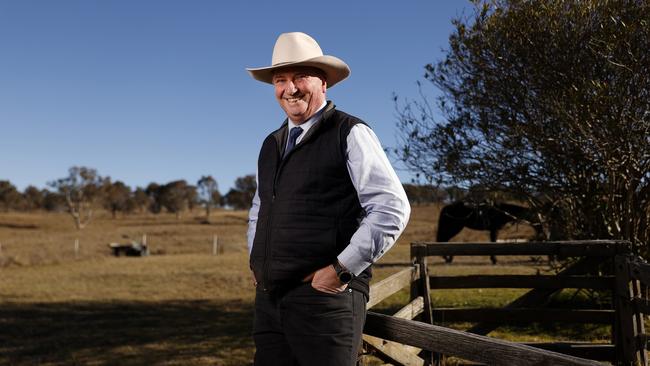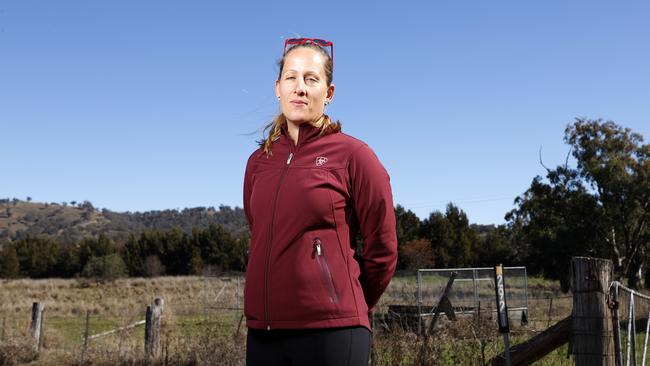Joyce unites farmers in renewable energy transmission lines battle
Former deputy PM Barnaby Joyce has united farmers from Far North Queensland to Victoria to fight the compulsory purchase of land for high voltage renewable energy transmission lines.

Farmers from Far North Queensland through NSW and into Victoria are forming a single coalition to fight the compulsory purchase of their land for high voltage renewable energy transmission lines.
Former deputy prime minister Barnaby Joyce united the farmers on a Zoom meeting last week to try and stop the 500 kilovolt cables passing over prime agricultural land, including his own.
“All these farmers have to deal with transmission lines going across their land from Queensland to … southern NSW, New England, the Upper Hunter and into Victoria,” Mr Joyce said. “But none of them were talking to each other.”
The landholders are furious at being forced to have the “eyesore” of high voltage cables running across their land in 1km wide corridors, which they say will reduce its value far beyond any compensation on offer.

Mr Joyce said the landholders were now forming a committee and preparing to “turn up on the lawn of Parliament House” to let Prime Minister Anthony Albanese know “just how angry” they were.
“On the way I think they will get a lot of support from people in Sydney who have just about had it up to the neck with their rising power prices,” he said.
The new transmission lines such as the NSW to South Australia interconnector are critical to moving wind and solar power from the new Renewable Energy Zones that have been gazetted across the eastern coast of Australia, from Queensland through NSW and Victoria to South Australia.
The axing of coal power and rush to renewables comes as Sweden, one of the world leaders in the transition to a fossil free economy, has dumped its 100 per cent renewable energy target to allow for the introduction of nuclear power, which has a much smaller footprint.
Jacqui Gidley-Baird and her husband Duncan have spent thousands of dollars burying power lines on their cattle property outside Tamworth to reduce visual pollution.
“Now we have found from friends on Facebook that they want to put a 500 KV power line through the middle of our property,” she said.
“We have a ridge line with a lot of grey box trees that has one of the only chlamydia free koala populations in the area and they want to chop those down for a power line,” she said.

“We asked them to put it on the national park and they said no because it was a fire risk but then how is it OK to put it over the top of our house?”
She said official notification of the compulsory purchase of their land came in the form of a notice in a black plastic bag that was fixed to the farm gate with a peg.
Farmer Tim Skerrett said generations of his family had turned his 3700 acre property at Mulla Creek in northeast NSW into “prime agricultural land” that would be sliced in half by the power lines.
“The airstrip would be inoperable which is how we fight bushfires,” he said. “This is not just our home and our job, it is a whole way of life.”
He said a public meeting with representatives from the NSW government’s renewable energy authority EnergyCo was another example of “divide and conquer”, with farmers being taken aside individually rather than being allowed to speak together.
An EnergyCo spokeswoman said New England farmers had been delivered a letter to notify them of the “preliminary study” transmission line corridor as part of a wider communication campaign, including 14 community drop-in sessions and the mailing out of 49,000 postcards.
“EnergyCo is making every effort to minimise impacts on local landowners,” she said. “However, we will need to build the transmission infrastructure on private land in some areas.”







To join the conversation, please log in. Don't have an account? Register
Join the conversation, you are commenting as Logout